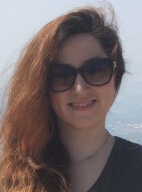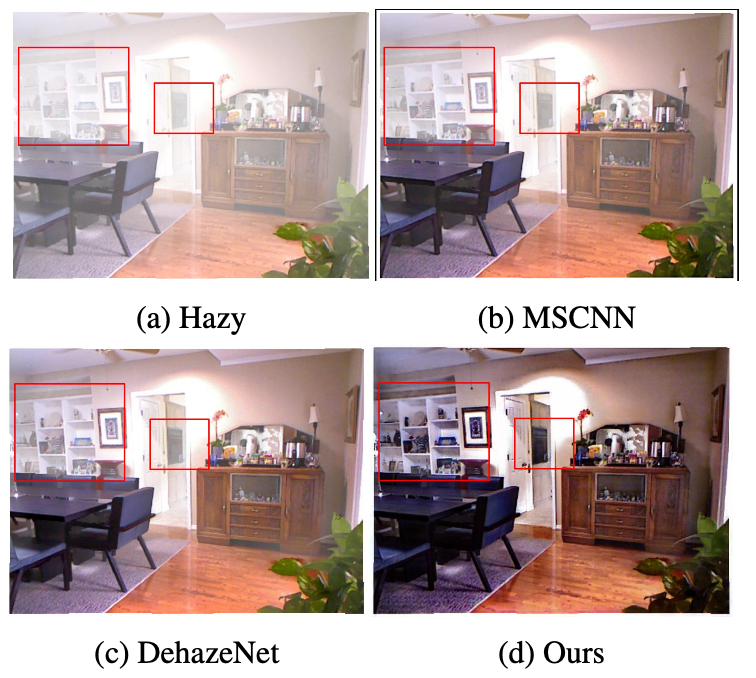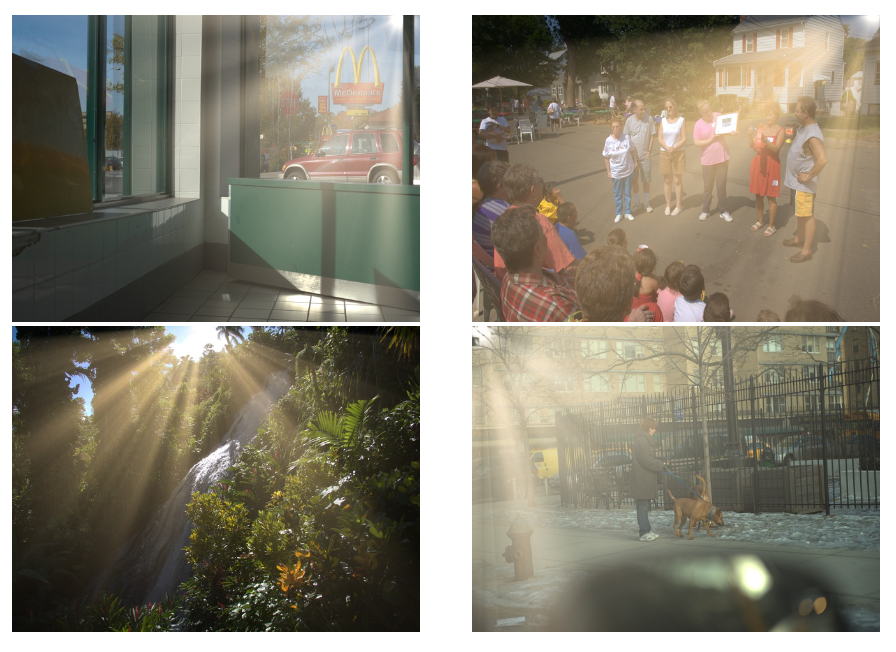
Ph.D.
University of Texas at Arlington
Email: zahra [dot] anvari [at] mavs [dot] uta [dot] edu
I hold a Ph.D. in Computer Science from the University of Texas at Arlington. I have been doing my Ph.D. under the supervision of Dr. Vassilis Athitsos in Vision-Learning-Mining (VLM) Research Lab. I received my Master's degree in Computer Engineering from the University of Urmia in 2013.
My research interesets are in the areas of Computer Vision and Deep Learning. My current work focuses on developing deep learning methods for image restoration and enhancement problems. My past work was focused on face detection, verification, and clustering.
News Updates
Selected Projects 
Enhanced CycleGAN Dehazing Network
Single image dehazing is a challenging problem, and it is far from solved. Most current solutions require paired image datasets that include both hazy images and their corresponding haze-free ground-truth. How- ever, in reality lighting conditions and other factors can produce a range of haze-free images that can serve as ground truth for a hazy image, and a single ground truth image cannot capture that range. This limits the scalability and practicality of paired methods in real-world applications. In this paper, we focus on unpaired single image dehazing and reduce the image dehazing problem to an unpaired image-to-image translation and propose an Enhanced CycleGAN Dehazing Network (ECDN). We enhance CycleGAN from different angles for the dehazing purpose. We employ a global-local discriminator structure to deal with spatially varying haze. We define self-regularized color loss and utilize it along with perceptual loss to generate more realistic and visually pleasing images. We use an encoder-decoder archi- tecture with residual blocks in the generator with skip connections so that the network better preserves the details. Through an ablation study, we demonstrate the effectiveness of different modules in the performance of the proposed network. Our extensive experiments over two benchmark datasets show that our network outperforms previous work in terms of PSNR and SSIM.Evaluating Single Image Dehazing Methods Under Realistic Sunlight Haze.
Haze can degrade the visibility and the image quality dras- tically, thus degrading the performance of computer vision tasks such as object detection. Single image dehazing is a challenging and ill-posed problem, despite being widely studied. Most existing methods assume that haze has a uniform/homogeneous distribution and haze can have a single color, i.e. grayish white color similar to smoke, while in reality haze can be distributed non-uniformly with different patterns and col- ors. In this paper, we focus on haze created by sunlight as it is one of the most prevalent types of haze in the wild. Sunlight can generate non- uniformly distributed haze with drastic density changes due to sun rays and also a spectrum of haze color due to sunlight color changes during the day. This presents a new challenge to image dehazing methods. For these methods to be practical, this problem needs to be addressed. To quantify the challenges and assess the performance of these methods, we present a sunlight haze benchmark dataset, Sun-Haze, containing 107 hazy images with different types of haze created by sunlight having a variety of intensity and color. We evaluate a representative set of state- of-the-art image dehazing methods on this benchmark dataset in terms of standard metrics such as PSNR, SSIM, CIEDE2000, PI and NIQE. Our results provide information on limitations of current methods, and on the practicality of their underlying assumptions.[Paper]
A Pipeline for Automated Face Dataset Creation from Unlabeled Images.
Computer vision tasks are very dataset dependent and with the emerging growth of image processing tasks and their applications, there is a huge demand for more datasets in terms of variety or size. Considering many face datasets are assembled largely manually, the process of manual dataset construction could be very time- consuming and labor intensive. In addition, some face datasets are constructed automatically over the past few years, but they are all constructed with previous knowledge of labels to some extent. In this work, we focus on automated face dataset generation from unlabeled images. We present a novel and effective pipeline for gen- erating face datasets automatically from unlabeled and raw data for face-related tasks. We evaluated our pipeline on several datasets and it achieved a significant improvement compared to clustering-only approaches, which shows its potential towards practical solutions for automated face dataset generation.[Paper]
Publications 
Enhanced CycleGAN Dehazing Network.
[PDF] [Code] [Presentation] [BibTeX]
Zahra Anvari and Vassilis Athitsos
16th International Joint Conference on Computer Vision, Imaging and Computer Graphics Theory and Applications (VISAPP),
Vienna, Austria, February 2021.
Evaluating Single Image Dehazing Methods Under Realistic Sunlight Haze.
[PDF] [Sun-Haze Dataset] [Presentation] [BibTeX]
Zahra Anvari and Vassilis Athitsos
15th International Symposium on Visual Computing (ISVC), San Diego, CA, October 2020.
A Pipeline for Automated Face Dataset Creation from Unlabeled Images.
[PDF] [Code] [Presentation] [BibTeX]
Zahra Anvari and Vassilis Athitsos
12th ACM International Conference on Pervasive Technologies Related to Assistive Environments (PETRA), June 2019.
Transportation Routing in Urban Environments Using Updated Traffic Information Provided through Vehicular Communications
[PDF][BibTeX]
Saleh Yousefi, Tofigh Abbasi, and Zahra Anvari
Journal of Treansportation Systems Engineering and Information Technology,
Volume 14, Issue 5, pages 23−36, October 2014.
Thanks to Vasilios Mavroudis for the template!


